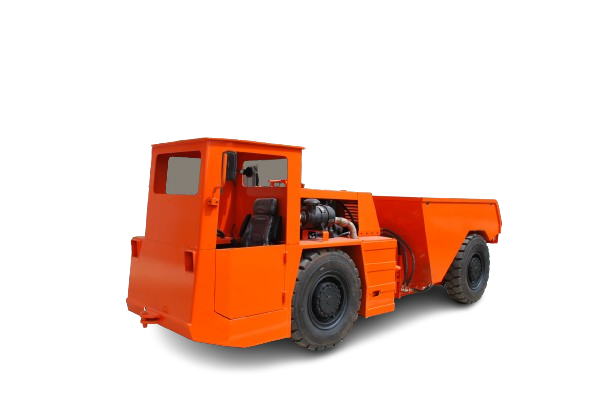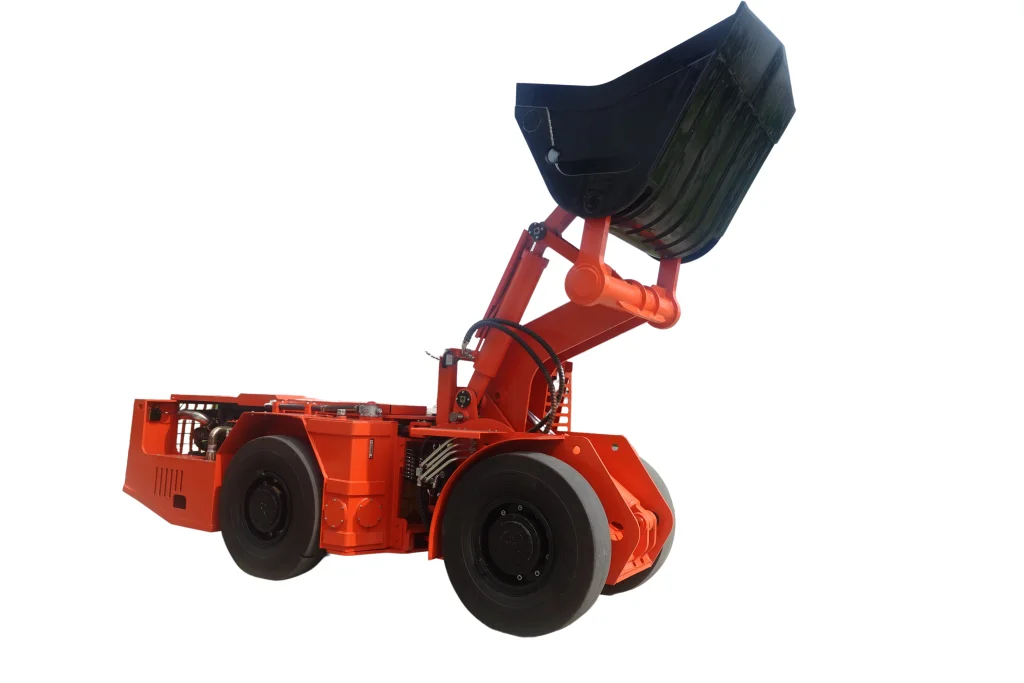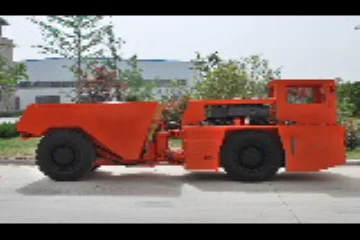Understanding Underground Mining Trucks
What is an Underground Mining Truck?
An underground mining truck, as the name suggests, is a specially designed vehicle used to transport materials extracted from below the earth’s surface. These trucks are engineered to operate in the confined spaces of underground mines, providing the necessary robustness and reliability required for such challenging environments. They play a crucial role in facilitating smoother logistics within the mine, ensuring that minerals and ores reach the surface efficiently.
Purpose and Use of Underground Mining Trucks
The primary purpose of underground mining trucks is to transport large volumes of mined materials from the extraction points to processing sites or above ground. These trucks are indispensable in mining operations, as they significantly reduce the time and labor involved in manual hauling. They are built to handle harsh underground conditions, including uneven terrains, limited maneuvering space, and potential hazards, thereby enhancing productivity and safety in mining operations.
Dimensions and Capacities
Typical Dimensions of Underground Mining Trucks
Understanding the typical dimensions of underground mining trucks is essential for selecting the right equipment based on the specific needs of a mining project. The dimensions often include length, width, height, and turning radius.
Length, Width, and Height
Underground mining trucks typically range from 8 to 12 meters in length, depending on the model and manufacturer. The width can vary between 2.5 and 4 meters, ensuring they can navigate through narrow mine tunnels. The height, often between 2.5 and 3.5 meters, is designed to be compact enough to operate within the limited vertical space of an underground mine. These dimensions are critical as they determine the truck’s ability to maneuver through tight spaces and optimize load capacity.
Turning Radius
The turning radius of an underground mining truck is a pivotal dimension that impacts its maneuverability. Typically, these trucks have a turning radius between 6 and 8 meters. A smaller turning radius is generally preferred as it allows for better navigation in the constrained and often intricate layout of underground mines. Good maneuverability ensures that the truck can efficiently operate in restricted areas and on winding paths without causing delays or accidents.
Cargo Capacity
Cargo capacity is another vital aspect to consider when evaluating underground mining trucks. It encompasses both the load volume and weight capacity that the truck can handle.
Load Volume
The load volume refers to the total space available in the truck’s cargo area for carrying mined materials. Underground mining trucks usually have a load volume capacity ranging from 10 to 30 cubic meters. Selecting the appropriate load volume is crucial because it directly correlates to the efficiency of material transport; a higher volume capacity can reduce the number of trips needed, thereby saving time and fuel.
Weight Capacity
Weight capacity indicates the maximum weight that an underground mining truck can safely transport. This capacity typically ranges from 20 to 60 tons. It is essential to match the truck’s weight capacity with the nature of the extracted materials to avoid overloading, which can lead to mechanical failures and safety hazards. Properly balancing load volume and weight capacity ensures optimal performance and longevity of the mining truck.
Types of Underground Mining Trucks
Articulated Dump Trucks
Articulated dump trucks are a popular choice in underground mining operations due to their flexibility and adaptability. These trucks feature a pivot joint which connects the cab to the dump box, allowing for enhanced maneuverability in tight and rugged terrains. Articulated dump trucks are particularly advantageous in conditions where agility is paramount, such as mines with twisty paths or changing elevations. Their ability to pivot makes them easier to navigate through narrow tunnels and sharp turns compared to rigid frame trucks.
Rigid Frame Trucks
Rigid frame trucks, on the other hand, are characterized by their sturdy, non-articulated structure. These trucks are built for durability and stability, often offering higher load capacities compared to their articulated counterparts. Rigid frame trucks are suitable for operations in more stable and less convoluted mine layouts where the emphasis is on transporting larger volumes efficiently. They excel in environments where the paths are relatively straight and the main concern is transporting vast quantities of material with minimal risk of structural damage to the truck.
When choosing between articulated and rigid frame trucks, it is important to consider the specific demands of the mining operation. Both types offer distinct advantages suited to varying underground conditions, and the selection should be aligned with the project’s logistical and operational needs.
Factors Affecting Size Choice
Mine Tunnel Dimensions
One of the primary factors influencing the choice of an underground mining truck is the dimensions of the mine tunnels. The height, width, and overall geometry of the tunnels determine the maximum size of the truck that can be effectively used. In tunnels with restricted vertical clearance, opting for trucks with lower profiles is essential to prevent operational hindrances. Similarly, if the tunnel width is limited, narrower trucks are required to navigate smoothly without risking damage to the vehicle or tunnel structure.
Type of Material Being Transported
The type and density of the materials being transported also play a crucial role in determining the appropriate size of an underground mining truck. Heavier, denser materials will necessitate trucks with higher weight capacities to ensure safe and efficient transport without overloading. Conversely, lighter materials that occupy more volume would benefit from trucks with larger cargo spaces, enhancing the efficiency of each haul by maximizing the volume transported per trip. Thus, understanding the material characteristics helps in selecting trucks with the optimal balance of load volume and weight capacity.
Equipment Maneuverability Requirements
The maneuverability requirements of the mining operation further influence the choice of truck size. Mines with complex and narrow tunnel networks demand trucks with excellent maneuverability and smaller turning radii. Trucks that can easily navigate sharp turns and uneven terrains without frequent adjustments significantly enhance operational efficiency and reduce downtime. Therefore, selecting trucks that can maneuver effectively within the specific layout and terrain of the mine is essential for maintaining smooth and continuous operations.
Customization Options
Modular Attachments
To cater to the diverse needs of underground mining operations, many trucks come with modular attachment options. These attachments allow for various modifications and enhancements, enabling trucks to perform specialized functions. Examples include adding water tanks for dust suppression or installing additional lighting for improved visibility in low-light conditions. By utilizing modular attachments, mining operations can tailor their trucks to handle specific tasks efficiently, thus optimizing their equipment’s versatility and productivity.
Enhanced Safety Features
Safety in underground mining is paramount, and modern trucks offer numerous customizable safety features. These features might include advanced braking systems, collision avoidance technology, fire suppression systems, and ergonomic designs to reduce operator fatigue. Implementing such safety enhancements is crucial to protect both the equipment and personnel, ensuring that operations run smoothly with minimal risk of accidents. Customizable safety options allow mining operations to align their trucks with stringent safety protocols and specific mine requirements.
Maintenance Considerations
Longevity of Large vs. Small Trucks
Maintenance needs and the durability of mining trucks are significant factors to consider when selecting the appropriate size. Larger trucks, while capable of handling more significant volumes, may experience more stress on components due to the immense loads, potentially leading to more frequent maintenance and shorter lifespans for certain parts. Conversely, smaller trucks might endure less mechanical stress per load but could require more trips to transport the same amount of material, which can also increase wear and tear. Balancing the truck size with maintenance requirements is essential to ensure cost-effectiveness and operational longevity.
Ease of Access for Repairs
Ease of access for maintenance and repairs is another critical factor influencing the choice of truck size. Larger trucks often have more complex systems and components that may require more elaborate repair processes and specialized skills. On the other hand, smaller trucks might offer better accessibility for repairs and maintenance, making it easier to perform routine checks and necessary fixes. Ensuring that maintenance teams can efficiently access and service the trucks helps in minimizing downtime and prolonging the operational lifespan of the equipment.
Future Trends in Underground Mining Truck Design
The future of underground mining trucks is leaning towards smarter, more efficient, and environmentally friendly designs. Technological advancements such as automation and electrified powertrains are becoming increasingly prevalent. Automated trucks equipped with advanced sensors and AI-driven navigation systems improve operational efficiency and safety by reducing human error and allowing for continuous operation without breaks. Additionally, the shift towards electric trucks aims to reduce the carbon footprint and improve the sustainability of mining operations, addressing environmental concerns and regulatory pressures. As these trends continue to evolve, the mining industry is likely to witness a significant transformation in how material transport is conducted underground, ultimately driving higher productivity and safety standards.
In conclusion, selecting the optimal size for an underground mining truck involves careful consideration of multiple factors, including the mine’s infrastructure, material characteristics, and operational requirements. By understanding the detailed dimensions, capacities, types, and customizable features of these trucks, mining operations can make informed choices that enhance efficiency, safety, and profitability. Furthermore, anticipating future trends in truck design will help stay ahead in an industry that constantly seeks to improve both its environmental impact and operational excellence.
Yantai Chi Hong Machinery Co., Ltd. is a reputable supplier in the underground mining industry, specializing in the manufacturing of Underground Mining Trucks. With over 12 years of experience, they have established themselves as a top player in China’s mine machines manufacturing industry.
Yantai Chi Hong offers a range of underground mining trucks designed to maximize productivity and minimize extraction costs. Their trucks are engineered with optimized machine width, length, and turning radius, allowing for operation in narrow vein tunnels. These trucks are capable of carrying high payloads for their weight and are maneuverable and quick on inclines.
One of their popular models is the CHUK-15, a compact underground truck with a 15-metric-ton capacity. It is specifically built to offer flexible mobility in narrow-vein mining conditions. Despite its compact size, this truck carries high payloads and has the same overall width as most 15-ton trucks on the market.
All Yantai Chi Hong underground mining trucks are designed to operate fully loaded and at high speeds on long spiral haulage ways with up to 20% gradients. This ensures efficient and productive operations in various mining environments.
Yantai Chi Hong Machinery Co., Ltd. has a production base with advanced facilities and a team of experienced personnel. Their products have obtained EU CE certification and ISO9001:2015 international quality certification, ensuring their commitment to delivering high-quality and reliable underground mining trucks.
Overall, Yantai Chi Hong Machinery Co., Ltd. is a trusted supplier in the underground mining industry, offering efficient and high-performing underground mining trucks for various mining operations.










